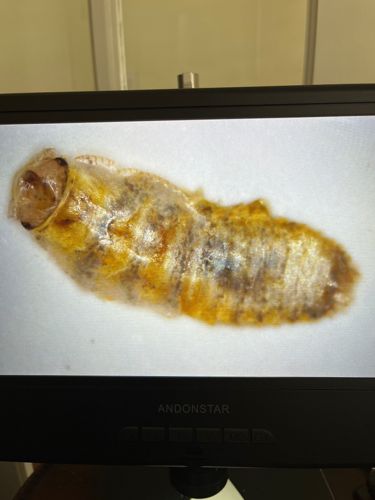Fly Pupa (likely Syrphid Fly or similar)
Scientific Name: Diptera (Order), various families (e.g., Syrphidae, Muscidae)
Order & Family: Order: Diptera, Family: Varies (e.g., Syrphidae, Muscidae, Calliphoridae)
Size: Generally 4-15 mm, but can vary by species.

Natural Habitat
Found in diverse habitats depending on the species; often in soil, decaying organic matter, water, or on plants where larvae feed (e.g., aphids for hoverflies). The puparium itself is often found in sheltered locations near larval feeding sites.
Diet & Feeding
The pupa stage is non-feeding. The larval diet varies widely by species: some are predatory (e.g., hoverfly larvae feed on aphids), some are scavengers (e.g., housefly larvae feed on decaying matter), and others are herbivores or parasites.
Behavior Patterns
The image shows a puparium, which is the hardened last larval skin that encloses the pupa of many Diptera. During this stage, the insect undergoes complete metamorphosis (from larva to adult). It is a quiescent, non-motile stage, typically lasting from several days to weeks depending on species and environmental conditions, during which major cellular reorganization occurs.
Risks & Benefits
Generally beneficial or neutral. Many fly pupae, particularly those of hoverflies (Syrphidae), develop from larvae that are significant biological control agents, feeding on agricultural pests like aphids. Muscidae and Calliphoridae (and other scavenger flies) play a role in decomposition. However, some fly species can be vectors of disease (e.g., house flies) or pests themselves, but the pupal stage itself poses no direct risk.
Identified on: 9/20/2025